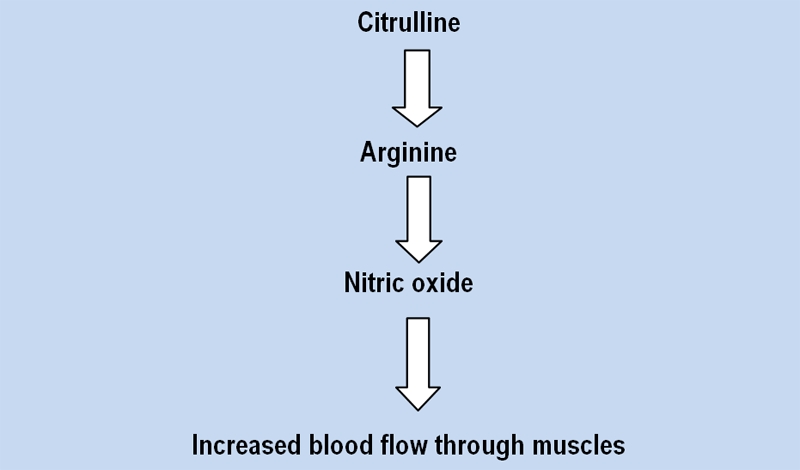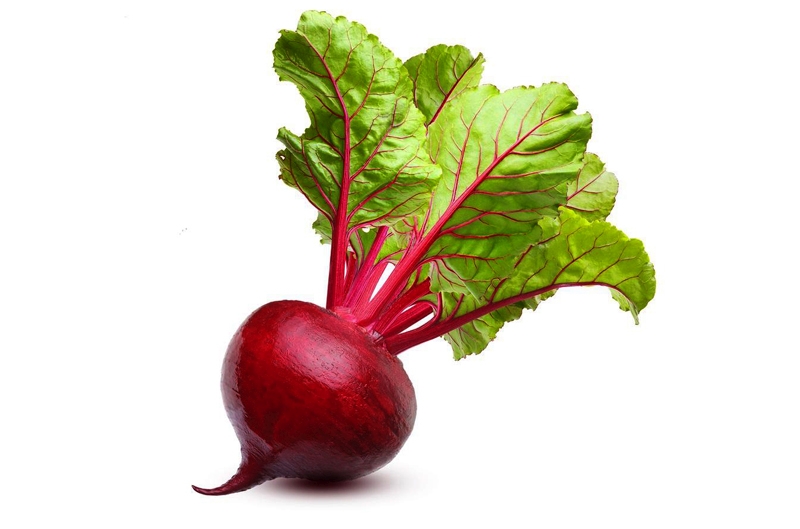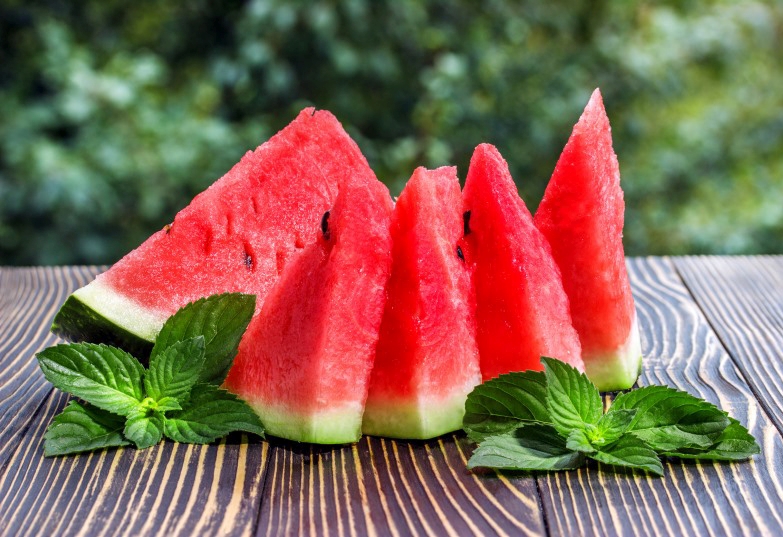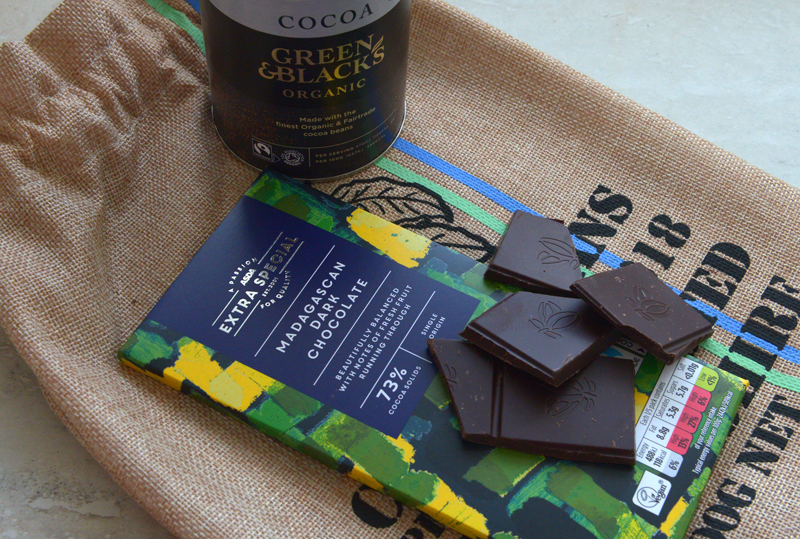Citrulline + beetroot: a nitric oxide double whammy!
Citrulline and beetroot juice can both boost levels of exercise-enhancing nitric oxide in the body. But is a combination of these nutrients even better?

Citrulline and beetroot juice supplementation have both been shown to boost levels of nitric oxide – a key signalling molecule for exercise performance. So is a combination of these nutrients even better?
If you weren’t around to witness it, the 1970s was a fascinating time for sport and sporting achievements. This was the decade that Muhammad Ali beat Joe Frazier in the ‘Thrilla In Manila’, the first ever Ironman Triathlon, the first ever perfect score in the history of Olympic gymnastics by Nadia Comăneci, and the decade that saw the legendary swimmer Mark Spitz set seven World Records to win a record seven gold medals in one Olympics.
NO discoveries
For medical researchers and sports scientists however, the 1970s is more significant for the discovery that the anti-angina drug nitrogylcerine (used as a medication for heart circulation problems) exerted its effects because it was being metabolized into a simple molecule called nitric oxide (NO). It was this NO that was producing the potent ‘vasodilation’ effects, relaxing the endothelial tissues in the circulatory system (blood vessels and capillaries) causing them to ‘deconstrict’, open up, and thus allow more blood to flow.
This finding sparked a flurry of research into NO and in the years that followed, it was discovered that not only does the human body make its own NO, but that this NO also acts an important neurotransmitter – a chemical signaler, which tells cells in the body how to behave(1). And when NO was discovered to be the neurotransmitter to erectile tissue, it spawned the development of Viagra, and the rest as they say is history! We now know that nitric oxide is not just an important neurotransmitter, but is in fact the most widespread signalling molecule in the body, helping to control a range of processes in the body, including nerve signalling, immune function, tissue turnover and the dilation of blood vessels (see box 1).
Box 1: Functions of NO in the body
NO has a number of biological functions in the body. As already mentioned, the endothelium (inner lining) of blood vessels uses nitric oxide to signal the surrounding smooth muscle to relax, thus resulting in vasodilation and increasing blood flow. Nitric oxide is also generated by immune cells called phagocytes (monocytes, macrophages, and neutrophils) as part of the human immune response, and it is also toxic to bacteria and other human pathogens.
Nitric oxide is highly reactive and diffuses freely across membranes but only has a lifetime of a few seconds. This combination of properties makes it ideal as a signalling molecule both between adjacent cells and within a single cell. Moreover, nitric oxide’s ability to react with sulphur containing residues in certain proteins (via a process known as ‘S-Nitrosylation’) means that it plays an important role in the regulation of protein structure. As our knowledge of NO metabolism deepens, it’s almost certain that we will uncover more biological surprises involving this remarkable molecule.
NO benefits
In theory, any nutritional approach that can enhance tissue turnover and vasodilation is a good thing for an athlete; all the oxygen for energy during exercise, along with the nutrients required for muscle tissue growth and repair are transported via the circulatory system and delivered by tiny capillaries. Waste products such as lactate are also removed via this route. Encouraging more vasodilation enhances circulation to the working muscles, and as well as producing a better pump during workouts, should theoretically improve nutrient delivery too. These vasodilation benefits go a long way to explaining the current popularity of NO enhancing supplements. If we accept that boosting NO production in the body is a good thing, the obvious question is whether there are any nutritional strategies that can increase NO generation in the body. The answer to this question is yes.
NO-producing nutrients
Although many have been investigated, there are two supplements in particular that seem to be able to enhance NO production in the body. One is the amino acid ‘citrulline’ and the other is beetroot juice (or extracts of beetroot), which is rich in the mineral ‘nitrate’. Both of these appear able to improve both aerobic and anaerobic metabolism by enhancing NO production, thereby improving blood flow, muscle contractility and mitochondrial respiration(2,3). In particular, ingesting nitrate can boost NO because it is easily directly chemically transformed first into nitrite then into NO(4). How does citrulline work? Well, the body readily produces NO by the oxidation of an essential amino acid called arginine (which releases NO) and arginine itself is generated when citrulline is ingested(5). At this point, you might wonder why not just ingest extra arginine, but there is good reason why citrulline is preferred – see box 2!
Box 2 and figure 1: Citrulline vs. arginine
Citrulline appears to help enhance exercise performance because it can be readily converted in the body to another amino acid called ‘arginine’; scientists now know that arginine can readily be used in the body to make the key signalling molecule called nitric oxide, which has the ability to increase blood flow through muscles, providing potential benefits during exercise (see figure 1). But if arginine can be readily converted to nitric oxide, why not just consume extra arginine instead of citrulline? The answer is to do with the way arginine is (or actually isn’t) absorbed.
When you consume arginine – either in food or in supplemental form – that arginine is readily absorbed from the intestines into the bloodstream. The problem arises however when the blood passes through the liver because much of the arginine in the blood is broken down by an enzyme in the body called ‘arginase’. Taking citrulline orally however bypasses this barrier; ingested citrulline passes through the liver unaffected, meaning it can be transported in tissues all over the body and then converted to arginine (resulting in increased nitric oxide production) wherever needed. Indeed, research shows that taking citrulline is more effective at raising tissue arginine that taking arginine itself(6)! It also explains why the evidence for citrulline supplementation is rather more convincing in terms of boosting nitric oxide than many of the so-called ‘nitric oxide boosting’ sports supplements, which have tended to be based on arginine products.
Figure 1: A simplified diagram showing the connection between citrulline, nitric oxide and increased blood flow

Evidence for benefits
What’s the up-to-date evidence that these two NO-producing nutrients can enhance exercise performance?
*Citrulline – A recent study (2020) found that 6 grams per day of citrulline supplementation for seven days increased exercise tolerance and total work on aerobic power performance(7). Moreover, a 2016 study found that 2.4 grams per day of citrulline supplementation increased VO2 uptake kinetics (the rate at which oxygen delivery gets up to speed when exercise is started) during endurance tests after seven days of supplementation(8). In the same study, this dose significantly reduced the time needed to complete a 4km time trial, while in another study, it improved training volume by increasing fatigue tolerance(9).
Citrulline may also benefit strength training adaptation; research shows that supplemental citrulline can stimulate a key signalling pathway called mTOR pathway, which helps increase the activity of genes involved in muscle protein synthesis(10), and perhaps it is unsurprising that citrulline ingestion has been shown to induce increases in isometric muscle strength levels when taken in conjunction with strength training(11). Along the same lines, a single dose of citrulline (8 grams) supplementation prior to exercise was found to improve the number of bench press repetitions performed at 80% at 1-rep max(12), and significantly reduce the sensation of fatigue by increasing the rate of adenosine triphosphate (ATP) production during exercise and the rate of phosphocreatine recovery after exercise(13).
*Nitrate-rich beetroot products
The role of nitrate-rich foods in exercise performance has been well documented in previous SPB articles (see this article for some background reading on the role of nitrate in foods such as beetroot and athletic performance). In summary, nitrate ingestion increases levels of NO in the body, which in turn increases blood flow in muscle during exercise(14,15). This almost certainly explains the positive findings documented in the literature such as:
- Supplementation with 500mls of beetroot juice 2 hours before exercise appears to improve aerobic power in submaximal aerobic tests, optimizing the total time in a trial in trained (but not elite) cyclists(16,17). (NB: this difference between amateur and elite athletes is most likely that the latter already have superbly efficient oxygen transport at sub-maximal exercise intensities)
- Nitrate seems to play a key role in anaerobic and maximal strength performance; for example, Japanese researchers found that 140mls of beetroot juice supplementation 2.5 hours before exercise improved isometric force production(18).
- In bench press strength tests, a greater number of repetitions were achieved by ingesting a drink containing 400mgs of nitrate for six days(19).
- Research also suggests that ingesting nitrate-rich beetroot products may reduce the cost of ATP in both maximal and endurance-strength performance production(20).
Citrulline/beetroot double whammy
Citrulline and beetroot products have been extensively studied individually, both showing improvements when supplemented acutely (30–60 min before exercise) or in the short-term (seven days to four weeks). However, given that the synthesis of NO in the body from these two supplements occurs by independent pathways, could a combination of the two nutrients provide a ‘double whammy’ effect? A brand new study just published in the journal ‘Nutrients’ by a team of Spanish researchers has sought to answer this question(21).
In this study, the researchers investigated the effects of long-term (nine weeks) combined oral supplementation with 3 grams per day of citrulline plus 2.1 grams per day beetroot extract (containing 300mg/day of nitrate) in 32 male trained triathletes on the following:
- Maximal strength measured by maximal horizontal jump (HJUMP)
- Handgrip strength using dynamometry test
- Strength-endurance performance by a 1-minute abdominal test
- Aerobic power by the ‘Cooper’s test’ (distance covered in 12 minutes)
The 32 triathletes, all with 5+ years of competitive triathlon experience completed 6 x training sessions per week during the nine weeks of the study. They all completed the same workload volume (70% aerobic work, 20% of strength sessions in the gym and an additional 10% core, injury prevention or joint mobility drills) with a duration of 2.5 hours per training session. However, before the 9-week training program began, the triathletes were randomly allocated to one of four groups (eight athletes per group):
- Citrulline group – consuming 3 grams of citrulline per day.
- Beetroot extract group – consuming 2.1 grams per day of beetroot extract providing 300mgs per day of nitrate.
- Citrulline + beetroot group - consuming 3 grams of citrulline plus 2.1 grams of beetroot extract per day.
- Placebo – consuming inert cellulose capsules.
The study was double blinded so that neither the triathletes nor the researchers knew who was taking what. Before and after the 9-week study period, all the triathletes undertook the four performance tests listed above to see what differences (if any) were observed.
The findings
The key findings were as follows (see figure 2):
- The beetroot and the citrulline + beetroot groups significantly improved their aerobic performances in the Cooper test compared to placebo and citrulline-only groups. The gains in the citrulline + beetroot group were particularly impressive.
- Only the citrulline + beetroot group displayed a significant increase on HJUMP (jump height) and the 1-minute abdominal test.
The researchers concluded as follows: ‘The combined supplementation of 3 grams per day of citrulline + 2.1 grams per day of beetroot extract (providing 300mg/day of nitrate) can improve maximal strength and endurance-strength capacity. In addition, this combination promotes an increase in performance in tests involving aerobic power compared to citrulline of beetroot supplementation separately.
Figure 2: Key performance testing results in the four groups(21)

NB: H-Jump = jump height; Dyn = handgrip strength; 1-MAT = 1-minute abdominal endurance; Cooper = aerobic Cooper test. PLAG = placebo; CITG = citrulline only; BRG = beetroot only; CIT-BRG = citrulline + beetroot group.
Implications for athletes
This is the first study looking at combined beetroot produce and citrulline one endurance and endurance/strength performance. However, as well as building on what we already know about the benefits of both beetroot and citrulline, this data shows that endurance athletes or those competing in events where strength-endurance is important can experience a double whammy benefits of combining the two nutrients, and should therefore be considered by athletes looking for a performance edge.
The caveat to the above recommendation is that being the first study, the data is limited and therefore further studies will be needed before we can be 100% confident in the potential benefits of beetroot + citrulline combination. Also, note that the athletes took this combination for nine weeks to help facilitate a training adaptation effect; simply taking these nutrients for a short period may not deliver the desired results.
Finally, although well trained, these athletes were not competing at the very highest elite level. We cannot be sure therefore that elite athletes would obtain the same benefits. Despite these caveats, the evidence from this study (and previous studies) suggests that competitive endurance athletes in sports where strength is also a factor (such as triathlon) could benefit from a targeted period of beetroot + citrulline supplementation (at the dosages used in this study) – for example in the 2-3 month run up to a key competition. Given both these supplements are extremely safe and legal, if you have the financial wherewithal, you could do worse than given them a whirl!
References
- Pharmacol Rev 1991;43:109-42
- Nat Rev Drug Discov. 2008 Feb; 7(2):156-67
- Bryan N.S. Safe and Effective Use of Nitric Oxide-Based Supplements and Nutrition for Sports Performance. 2nd ed. Elsevier Inc.; Amsterdam, The Netherlands: 2018
- 2020 May 2; 12(5):
- 2013 Mar; 29(3):479-84
- Amino Acids. 2005 Nov;29(3):177-205
- J Strength Cond Res. 2020 Mar; 34(3):647-652
- J Int Soc Sports Nutr. 2016; 13():6
- J Strength Cond Res. 2019 Sep; 33(9):2464-2470
- Am J Physiol Endocrinol Metab. 2012 Nov 1; 303(9):E1117-25
- Curr Opin Clin Nutr Metab Care. 2017 Jan; 20(1):92-98
- J Diet Suppl. 2016; 13(3):269-82
- J Strength Cond Res. 2019 Sep; 33(9):2321-2329
- Eur J Appl Physiol. 2019 May; 119(5):1043-1053
- 2014 Nov 18; 6(11):5224-64
- Nitric Oxide. 2019 Apr 1; 85():44-52
- Med Sci Sports Exerc. 2014 Dec; 46(12):2326-34
- 2017 Mar 22; 9(3):
- J Strength Cond Res. 2016 Dec; 30(12):3520-3524
- J Appl Physiol (1985). 2010 Jul; 109(1):135-48
- 2022 Jan; 14(1): 40
Newsletter Sign Up
Testimonials
Dr. Alexandra Fandetti-Robin, Back & Body Chiropractic
Elspeth Cowell MSCh DpodM SRCh HCPC reg
William Hunter, Nuffield Health
Newsletter Sign Up
Coaches Testimonials
Dr. Alexandra Fandetti-Robin, Back & Body Chiropractic
Elspeth Cowell MSCh DpodM SRCh HCPC reg
William Hunter, Nuffield Health
Keep up with latest sports science research and apply it to maximize performance
Today you have the chance to join a group of athletes, and sports coaches/trainers who all have something special in common...
They use the latest research to improve performance for themselves and their clients - both athletes and sports teams - with help from global specialists in the fields of sports science, sports medicine and sports psychology.
They do this by reading Sports Performance Bulletin, an easy-to-digest but serious-minded journal dedicated to high performance sports. SPB offers a wealth of information and insight into the latest research, in an easily-accessible and understood format, along with a wealth of practical recommendations.
*includes 3 coaching manuals
Get Inspired
All the latest techniques and approaches
Sports Performance Bulletin helps dedicated endurance athletes improve their performance. Sense-checking the latest sports science research, and sourcing evidence and case studies to support findings, Sports Performance Bulletin turns proven insights into easily digestible practical advice. Supporting athletes, coaches and professionals who wish to ensure their guidance and programmes are kept right up to date and based on credible science.













